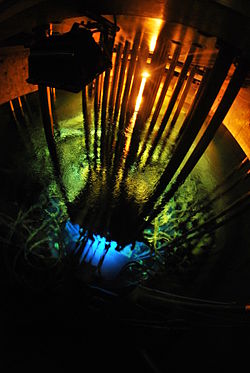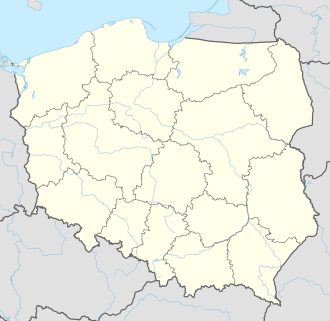2000 through 2020
A 2006 feasibility study suggested it optimal to build an 11.5 GWe capacity nuclear power plant. However, this proving unaffordable in the immediate future, Poland decided to build a 4.5 GWe nuclear power plant by 2030. In 2007, a draft energy policy proposed a 10 GWe nuclear capacity by 2030 to provide 10% of electricity. [9] The deadline gives an estimated ten years for investment and construction and five years of public campaigning. [10]
In July 2006, Poland joined Lithuania, Estonia, and Latvia to build a new nuclear power plant in Lithuania to replace the Ignalina Nuclear Power Plant being shut down due to pressure from the EU. Poland would invest 22% with these other countries into the project, the Visaginas NPP main site would have been under principal construction by early 2016 with necessary prerequisite planning, financing, regulatory agency approval and logistical ground work in terms of infrastructure modernization and expansion finished and in place by 2015. The plant commercial operations scheduled to begin by 31 December 2022. [11] The total costs of the project was to be EUR 6 billion. Poland was guaranteed to have 1,200 MWe from the power plant and has upgraded transmission capacity between Lithuania and Poland. [9] After the nuclear project was abandoned, Lithuania instead became an importer of electricity from Poland.
In a public opinion poll, 60% of the population supported construction of a nuclear power plant in Poland to reduce its dependence on foreign sources of energy. Additionally, 48% supported construction of a nuclear power plant in their neighborhood, citing local benefits that include lower energy costs. [9]
The popular Baltic Sea resort Mielno was one of three sites selected, however in February 2012, residents voted overwhelmingly against the plan. Some 94 percent of the 2,389 people who took part in a referendum opposed the plant and only 5 percent supported it. [12]
In 2014, under the government of Prime Minister Donald Tusk, Poland's Nuclear Power Program was adopted. [13] [14] Through the early 2020s the Polish Nuclear Power Program was managed by the group EJ1 of the state-owned utility PGE Polska Grupa Energetyczna.
2020 to current
Growing environmental, climate change, and economic concerns among the Polish public, policymakers, and businesses continues to drive Polish interest in nuclear power in the 2020s. The most significant efforts are those of the state-owned nuclear development company Polskie Elektrownie Jądrowe regarding large light water reactors in the 1,000 MWe to 1,250 MWe range and those of private industrial companies pursuing small modular reactors for deployment at industrial sites.
In 2021 Polish Prime Minister Mateusz Morawiecki, jointly with prime ministers of Hungary, France, Czech Republic, Romania, Slovak Republic and Slovenia, signed an open letter to European Commission calling for recognition of role of nuclear power as the only non-intermittent low-carbon energy source currently available at industrial scale in Europe. [15]
In April 2021 Polish Academy of Sciences (PAN) published a comprehensive report on perspectives of decarbonization of energy sector, calling for increased use of "any low-carbon energy sources", including renewable energy and nuclear power. [16] Minister of energy Michał Kurtyka declared it's not realistic to look at low-carbon energy sector without nuclear power. [17]
A November 2021 poll indicated 74% in favor of building nuclear power plants in Poland in general, 58% supporting their location in their neighborhood and 39% opposing the latter. 82% believe nuclear power plants contribute to energy resilience of the country. [18]
A proposal has been also raised to retrofit thermal plants in Poland by replacing their coal boilers with SMRs, while preserving their existing generation and distribution infrastructure, which would reduce upfront capital costs by 28-35% and avoid emissions of 200 billion tons of CO2. [19]
In September 2023, Polskie Elektrownie Jądrowe formally signed an outline agreement with Westinghouse and Bechtel for the construction of Poland's first commercial nuclear power plant. The total investment into the plant, which will produce up to 3750 MWe and is estimated to be completed by 2032 or 2033, will amount to around 100 billion PLN. [20] In 2024, Jan Chadam (acting head of Polskie Elektrownie Jadrowe,) said the actual costs would be around 150 billion PLN (EUR 34.64 bln), so more than 10 bln EUR per GW. [21]
In May 2024, the Polish industry minister Marzena Czarnecka said that Poland's first nuclear plant is realistically seen starting operations in 2040, much later than the previously-envisaged 2032. [2]
In June 2024, following the election of a new government led by Donald Tusk, Polska Grupa Energetyczna stated it will decide whether to make the investment in nuclear within the next few years. [22]


